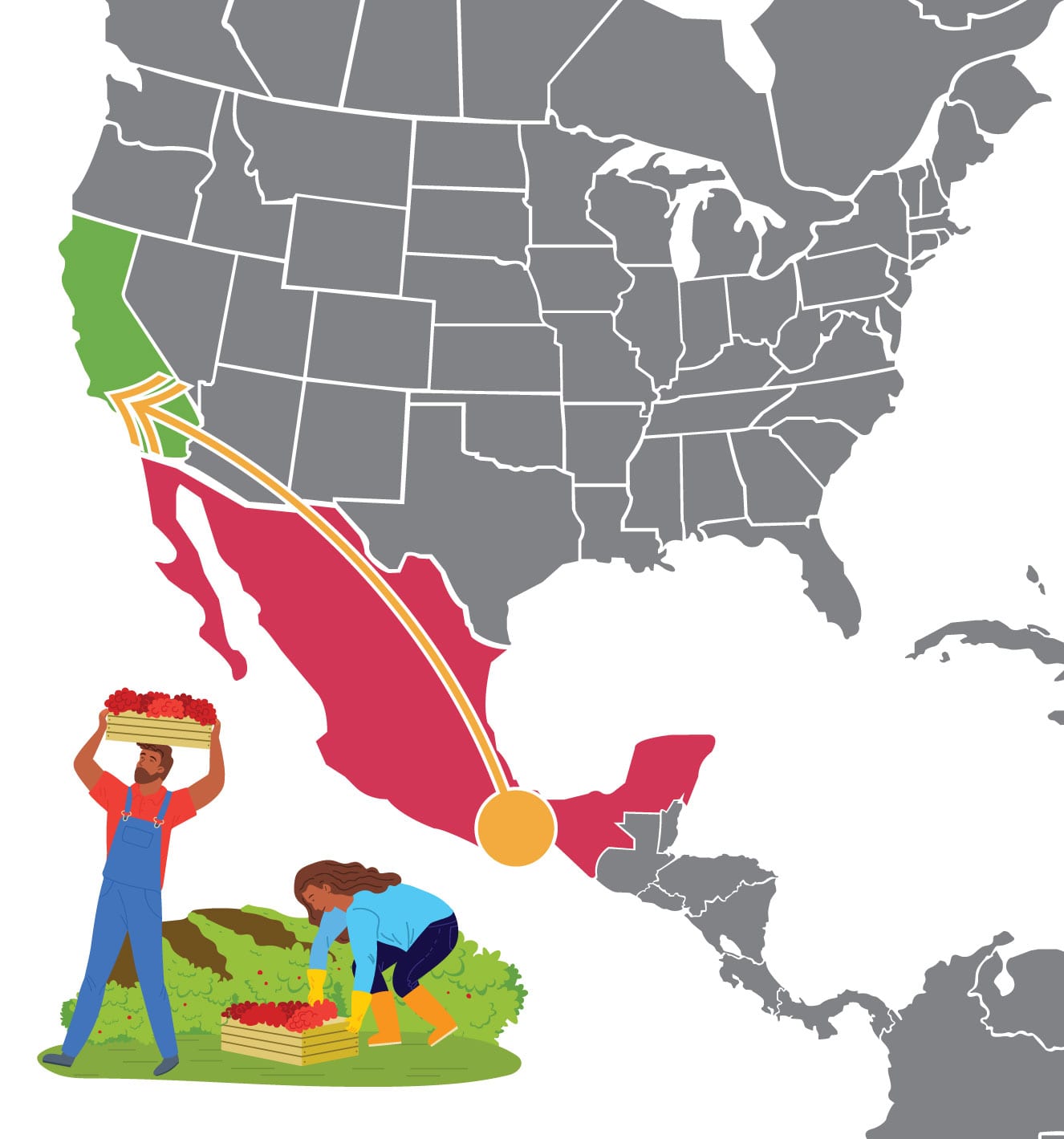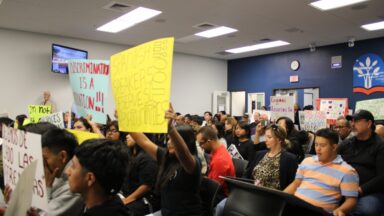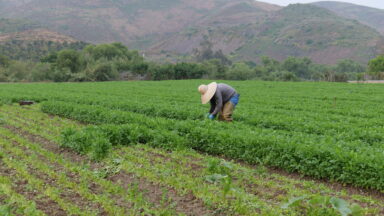Join us as we look back at another year of our collective work supporting, organizing, and empowering the indigenous migrant community!
“Harvesting Dignity: The Case for a Living Wage for Farmworkers,” sheds light on the realities surrounding the pay farmworkers receive and their workplace conditions but also underscores the pressing necessity for farmworkers to be justly compensated for their arduous labor. Read more below!
Who Are We?
The Indigenous Migrant Community that MICOP works with comes primarily from southern Mexico, including the states of Oaxaca, Guerrero, Michoacán, and Puebla.
Twenty thousand indigenous migrants live and work in Ventura County. Another 25,000 live and work in Santa Barbara County.
Soil erosion of the ancestral farmlands of the Mixteca region and economic opportunity here have drawn Mixtecs to California in search of agricultural work. Mixtecs have been a vital part of the Ventura County's economic success since the 1970's.
Concentrated in labor-intensive agricultural sectors such as row crops (strawberries and raspberries) and cut flowers, Mixtecs perform an increasing amount of the backbreaking labor which makes farming profitable and fresh fruits and vegetables available to the public.

[00:04]
MICOP really started several years before the anniversary that we are celebrating. Really out of an idea of the beauty of the indigenous community that I had come to know. We realized we needed to focus on some immediate issues facing people like food, diapers. That was a part of our early activity.
[0:29]
(SPANISH)
We are here accompanying you all to spread information. It is always important to maintain informed to know what is happening in our community.
[00:51]
(SPANISH)
Happy 20th Anniversary of Mixteco/Indigena Community Organizing Project!
[01:02]
The importance of the indigenous communities such as Mixteco, Zapotecos, Purapecha, Triqui, is that we come from a civilization that is about 7,000 years old or more.
[01:14]
We still keep a lot of our traditions and culture and beliefs and values. We still speak our own languages.
[01:26]
The Mixteco/Indigena Community Organizing Project, Proyecto Mixteco or MICOP is a place where we can identify ourselves. Where we can feel safe. A place where we can feel welcome. But it is also a place where we can find opportunities to grow as leaders.
[02:04]
Here at MICOP our programs are developed by our community members for our community members in a way that empowers and uplifts their voices and their ideas.
[02:13]
How we invest in indigenous ideas and indigenous leadership. For me it means growing from that initial meeting of diapers and food at Las Islas Clinic to being the organization that we are now with twenty different programs, a hundred different staff and spanning across Ventura and Santa Barbara County.
[02:45]
(SPANISH)
Happy 20th Anniversary Mixteco/Indigena Community Organizing Project!
[02:50]
(SPANISH)
We are all Oaxaca!
[02:53]
(SPANISH)
We are all Oaxaca!
[02:57]
(SPANISH)
We are all Oaxaca!
[03:00]
(SPANISH)
We are all Oaxaca!
[03:02]
(SPANISH)
Chanting continues
Celebrating 20 Years
Founded in 2001 by Nurse Practitioner, Sandra Young, the beginning of MICOP was a direct effort to respond to the immediate needs of the Indigenous Mixteco community in Oxnard, CA. Twenty years later, the Mixteco Indigena Community Organizing Project has grown to having 20 different programs, offices in Ventura County and Santa Barbara County, and helping dozens of indigenous families through advocacy and outreach.
How MICOP is Helping
Building Community
The communal tradition of “tequio” or community obligation promotes a spirit of mutual assistance and community building. Our celebrations of cultural traditions such as Día de los Muertos (Day of the Dead), Día del Niño (Children’s Day), Guelaguetza (regional dance festival celebrating all indigenous groups), and Fiesta Navideña (Christmas) build community strength and pride, and add to the richness and diversity of Ventura County life.
[00:07]
My name is Jose Mendoza, I am 16 years old.
[00:13]
I was 13 years old when I started working the field by helping my family.
[00:20]
Didn't know much about being poor or how hard it is to be indigenous.
[00:37]
I was moving to Salinas because of the seasons of the crops, and that's when my parents started saying that “You have to stay at school so you don't have to work like us, struggling.”
[00:55]
I don't want to see any of them work in the field.
[01:02]
Looking for your roots, you can discover more talents that you have that can change life of people.
[01:10]
I want to create awareness for my community through my art.
[01:19]
I want to study Natural Resources System, then go to Master degree in Art.
[01:29]
I want to have like a secret in the drawing that have a lot of significance.
[01:36]
Emotions, feelings about the past, or even the future, or inspire people to become a better person.
An Isolated Community
Mixtecs in Ventura County-and throughout the state-are culturally and linguistically isolated. MICOP - the Mixteco/Indigena Community Organizing Project is working to aid Mixtecs to draw on their community strengths and overcome existing barriers along California's Central Coast.








